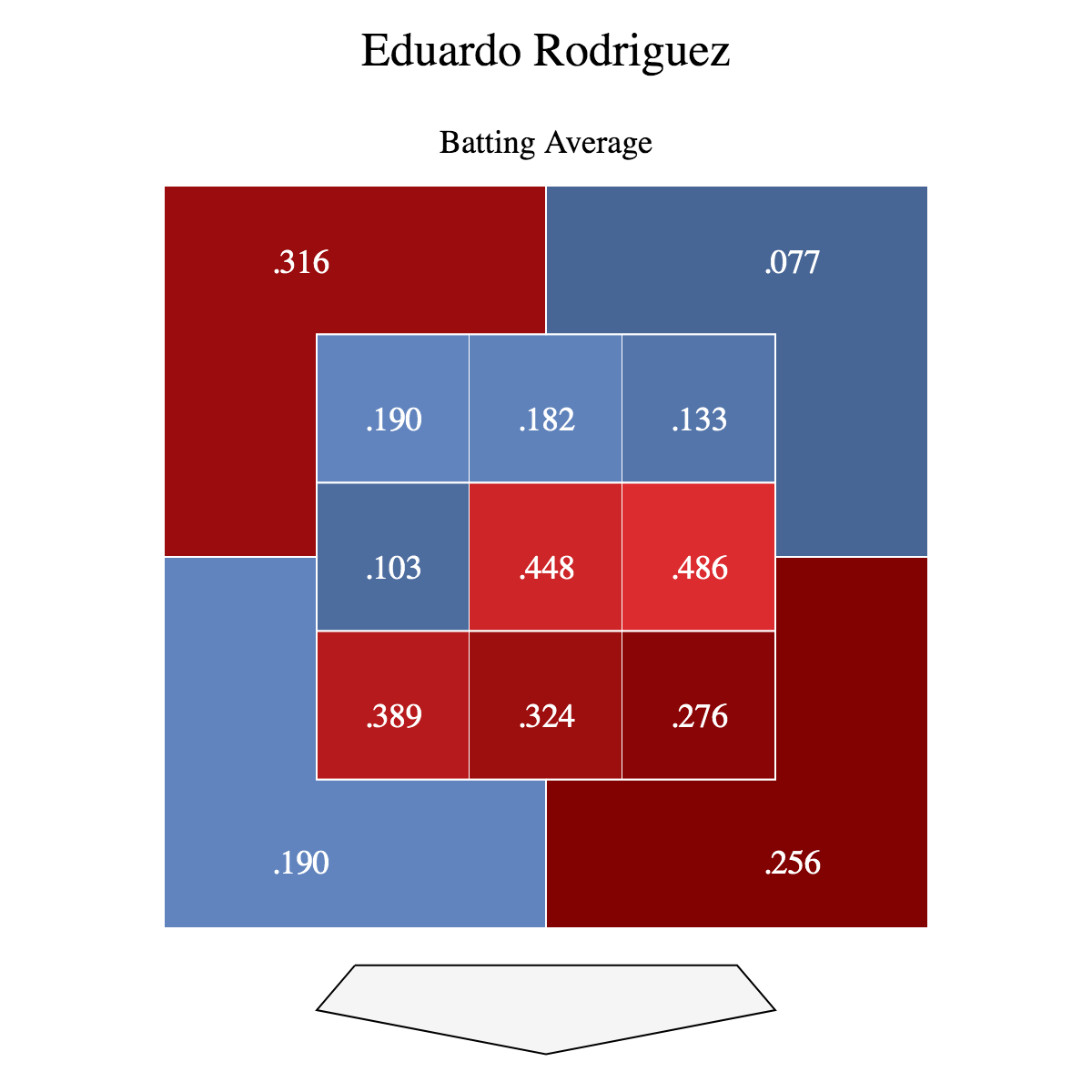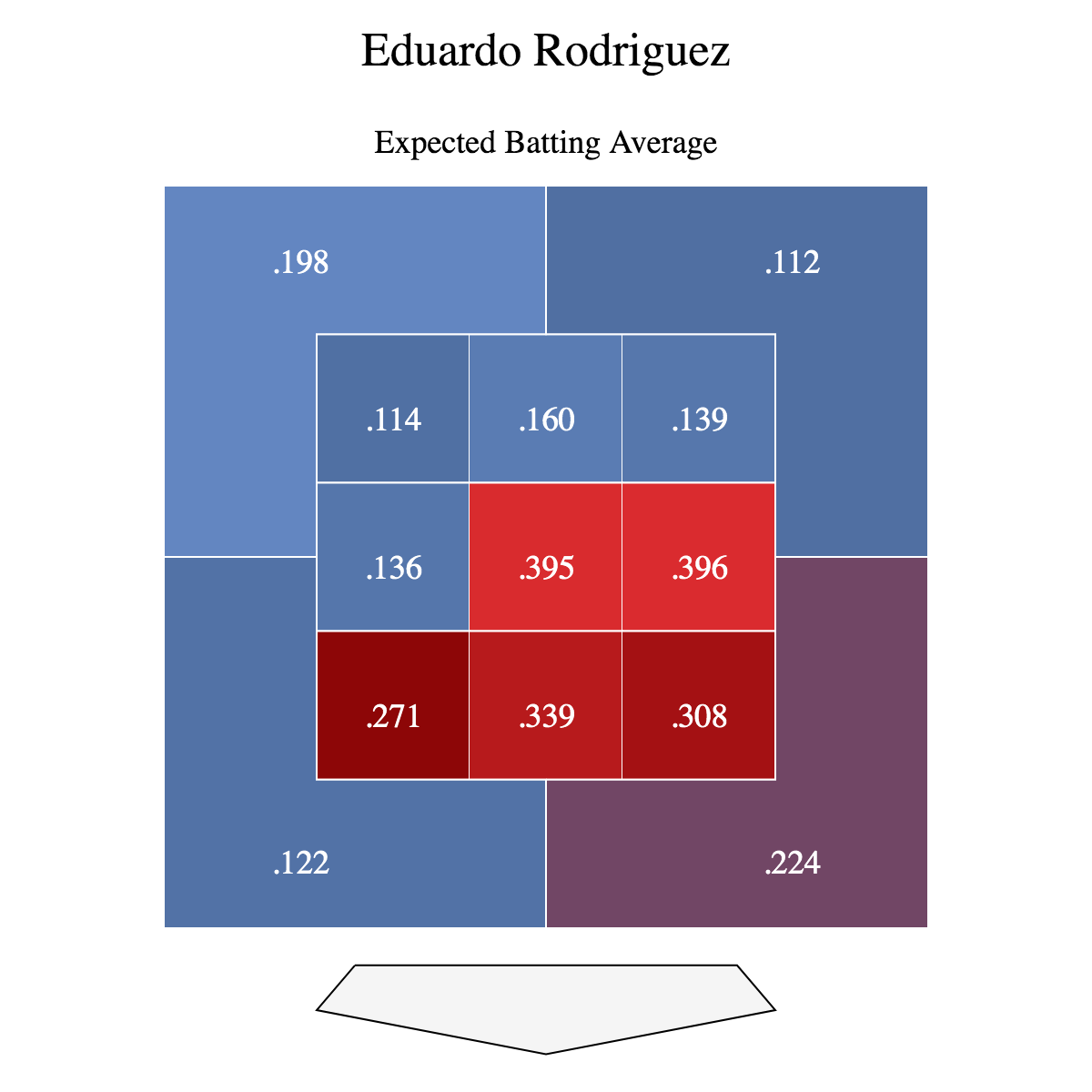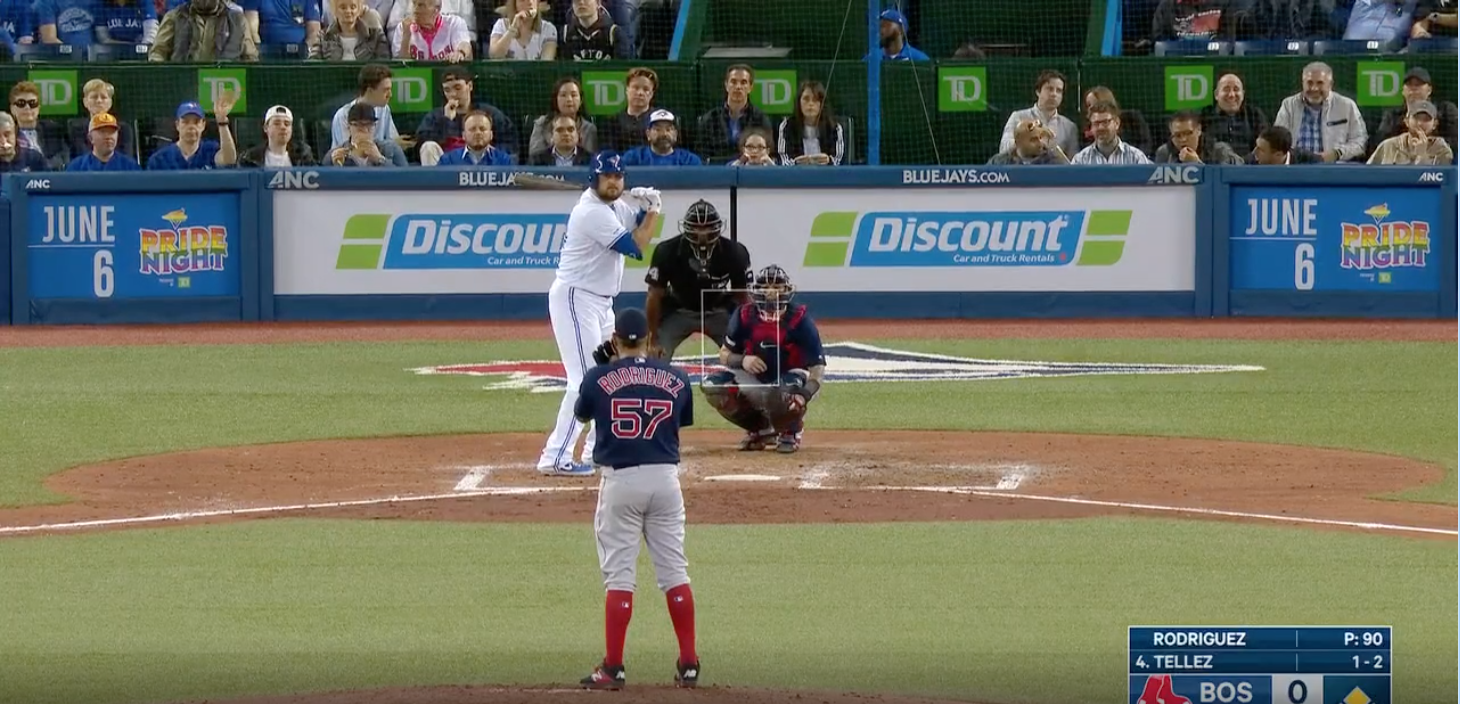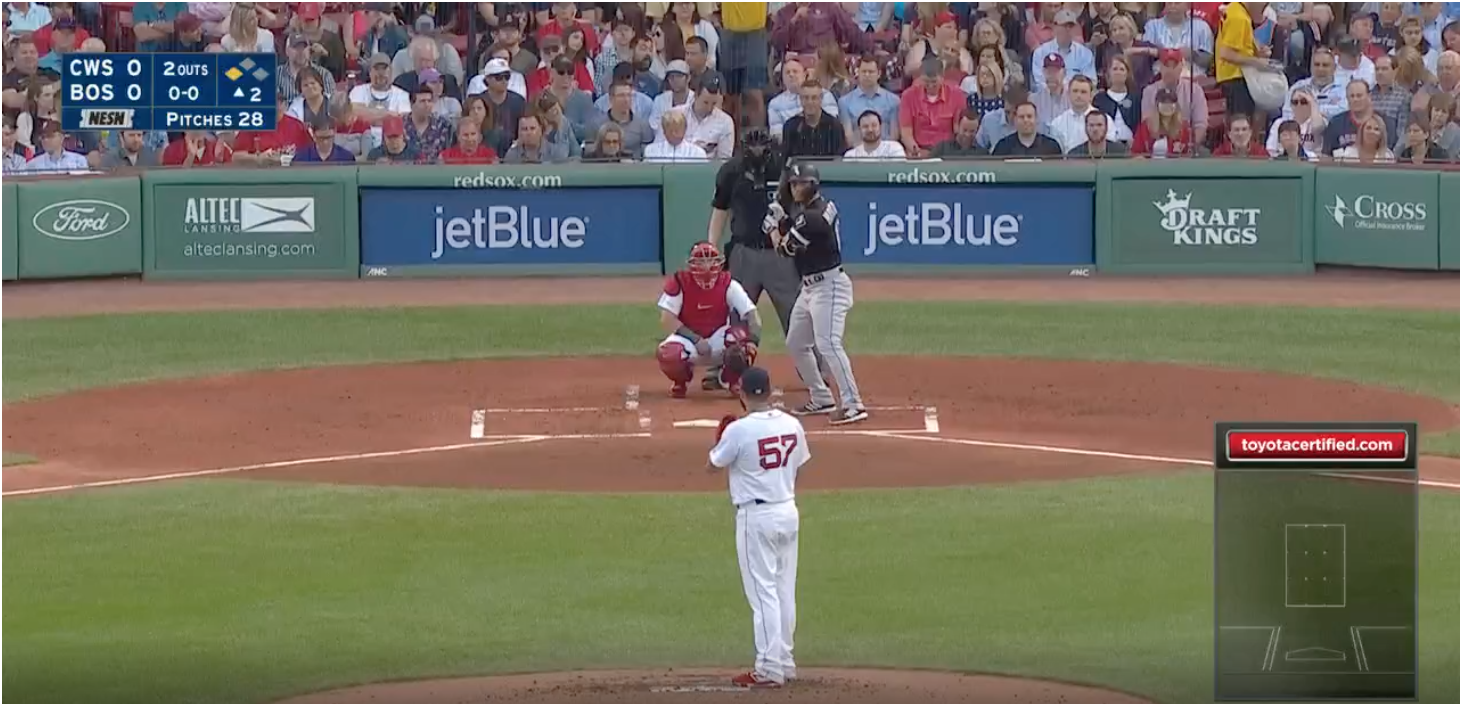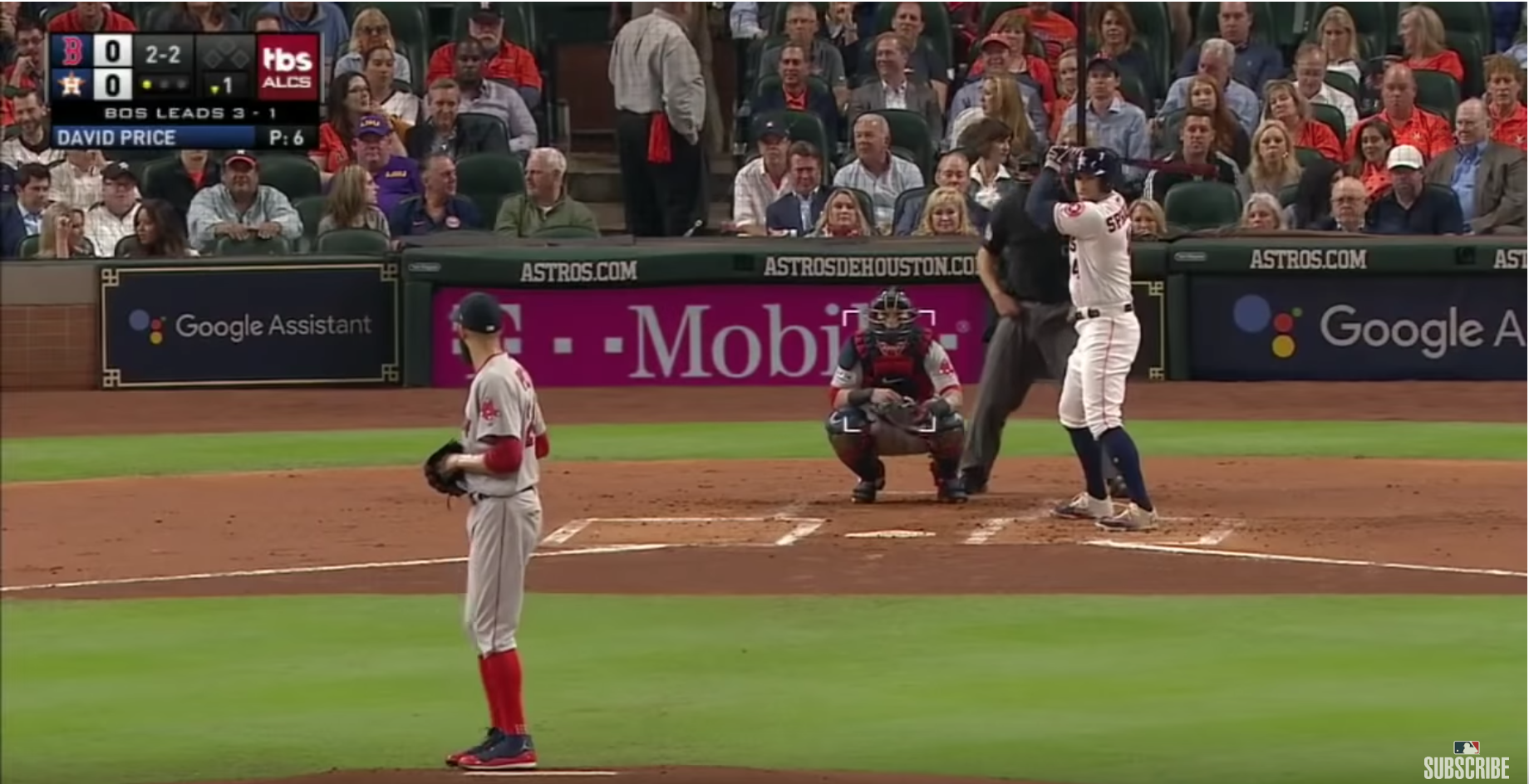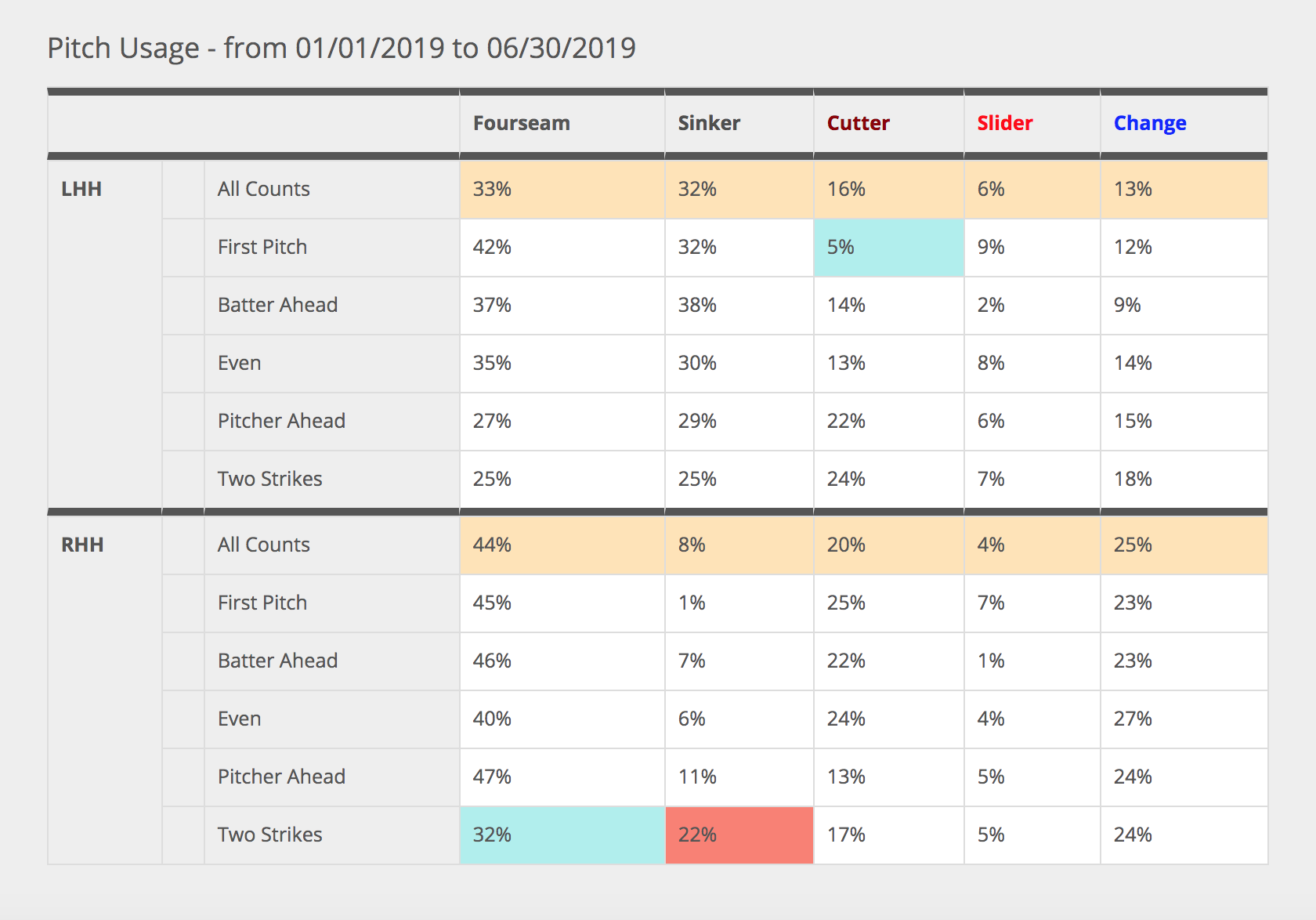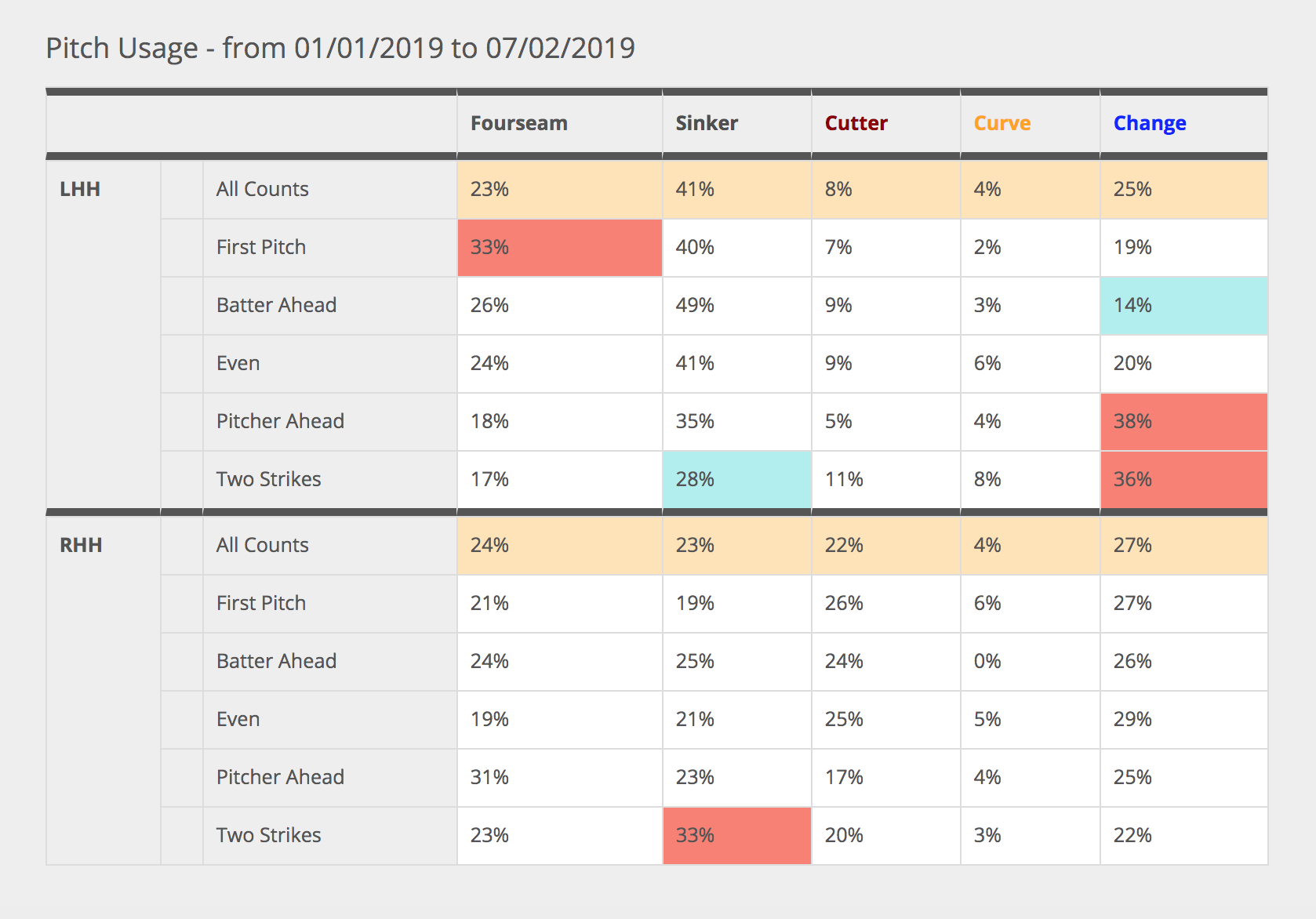Eduardo Rodriguez (“E-Rod”) made his major league debut against the Texas Rangers in Arlington, Texas, in 2015, a season after he was acquired from the Baltimore Orioles in a deadline deal for Andrew Miller. He was brilliant that start, not allowing a run over seven and two-thirds innings and striking out seven. Rodriguez was what Boston fans had eagerly awaited after seeing Miller’s dominance in Baltimore the season prior and then watching as the reliever joined fellow twin tower Dellin Betances in the Bronx as a new star attraction. Rodriguez had fulfilled Red Sox fans’ high expectations for the most part after that start, particularly enamoring the faithful with three dominant starts against the New York Yankees—a 2.22 ERA over 24.1 innings. With expectations at an all-time high, he began to falter, failing to reach the heights that his stuff demanded—now stuck with a career ERA over 4.00.
This season has not gone any better, with an ERA approaching 5.00 and a WHIP of nearly 1.50. Is there light at the end of the tunnel?
The Positives
Yes, E-Rod’s face-value numbers this season have not been pretty. However, there are some positives. For one, his exit velocity and hard-hit rate are in the 90th and 95th percentile, respectively. Rodriguez’s swinging-strike percentage is up, while his zone contact and zone swing percentages are down compared to last year—trends that are good for pitchers. Those numbers have been the reason Rodriguez’s xwOBA on the season is slightly ahead of highly regarded pitchers like Shane Bieber and Patrick Corbin. However, that is not even the most impressive thing.
E-Rod has been able to pitch every fifth day, allowing him to lead the Red Sox rotation in wins with eight. Yes, the win-loss record does not carry the same weight as it once did, but it does speak to his health, durability, and the length he pitches into games—rarities in his career. Speaking to length, the last time Rodriguez pitched fewer than five innings was against Oakland in April—spanning 11 starts. Of those 11 starts, only four were fewer than six innings. What E-Rod has supplied has helped the team avoid its disastrous bullpen, most likely leading to those wins.
Bad Luck
Despite the improvements made this season, you don’t have an ERA near five unless you have some deficiencies. With the gains Rodriguez has made, it’s rather odd that the results seem so unfavorable. This makes us look at his “bad luck” metrics:
| BABIP | HR/FB% | Average Exit Velocity (mph) | |
| 2015 | .289 | 10.4% | 86.5 |
| 2016 | .278 | 11.1% | 85.7 |
| 2017 | .299 | 11.8% | 86.0 |
| 2018 | .301 | 11.0% | 87.4 |
| 2019 | .326 | 15.5% | 85.8 |
From the table, we can derive some conclusions. For one, it definitely seems like Rodriguez is dealing with BABIP and HR/FB% issues this season, despite having an average exit velocity that is very nearly the lowest of his career. It would be easy to just stop here and assume that his numbers will normalize and that he should be in line for a big second half given his improvements. For the hits like Vladimir Guerrero, Jr., gets here, that seems like an acceptable conclusion.
That is an exceptionally placed changeup down and off the plate, and there is not much E-Rod could do but be frustrated. This has happened quite often for Rodriguez, looking at the following zone charts:
Comparing the two zone charts, we can infer that E-Rod has had some bad luck, with almost all of the zones having a higher batting average than expected batting average—particularly the low and out of zone areas. Vlad Jr.’s bloop single definitely attests to that bad luck. I then investigated further on those similarly well located pitches.
Against Rowdy Tellez:
Against Yoán Moncada:
Against Cheslor Cuthbert:
Each one of those pitches is incredibly well located. If we were to nitpick, maybe we could say that the cutters to Moncada and Cuthbert should have been a little more inside, but both pitches still hit the target placed by Christian Vázquez. In Tellez’s case, I have no idea how in an 0-0 count you are sitting changeup, and then manage to drive a ball that far inside for a mammoth blast. Generally, when you hit your target as a pitcher, you put yourself in better positions to succeed. The ball should never be going out of the park. Those three pitches then gave me doubt as to whether his BABIP and HR/FB% were actually bad luck, as it is rather difficult to give up a home run and then say it is bad luck—especially given how hard those three pitches were hit. If E-Rod is giving up home runs on quality pitches, then his pitch selection comes into question.
Pitch Selection
Before we dive in, I wanted to take a step back. In looking at Rodriguez’s starts, I noticed a subtle change in his mechanics from the beginning of the season to one of his more recent starts. Look at his position out of the windup:
He has shifted his feet and seems to be starting in an abbreviated windup. That got me thinking: Where have I seen that before? Lo and behold, it clicked.
It is his teammate, David Price. Now, there are some differences: E-Rod is on the third base side of the rubber, and Price is on the first base side, adding that Price is more square on than Rodriguez is.
This got me thinking about their pitch repertoire—they are remarkably similar. Both have four-seam and two-seam fastballs, with a cutter and changeup. Some breaking pitches are listed, but it’s negligible given their limited usage.
Speed With Usage
| Four-seam | Two-Seam | Cutter | Change | Curve | Slider | |
| Eduardo Rodriguez | 92.8 (40.8%) | 92.7 (13.1%) | 88.1 (19.3%) | 87.4 (22.6%) | 80.2 (2.7%) | 81.7 (1.7%) |
| David Price | 91.9 (25.5%) | 92.0 (26.5%) | 88.4 (16.9%) | 84.5 (27.8%) | 80.6 (3.4%) | N/A |
Just look at the changeup releases by both pitchers. Both are two-seam grips with a very similar axis of spin on the ball, thus giving it the same action on the pitch.
David Price, Filthy 88mph Changeup (grip/release/spin axis). ? pic.twitter.com/NcmdXwrpLW
— Rob Friedman (@PitchingNinja) May 18, 2018
Eduardo Rodriguez, Nasty 89mph Changeup (release/spin). ? pic.twitter.com/hFgA0DyucF
— Rob Friedman (@PitchingNinja) May 11, 2018
Price has undoubtedly had far more success this season compared to Rodriguez, owning a 3.33 ERA, more than a run lower than his teammate. Since the two have similar arsenals and usage, I wanted to understand where the two pitchers diverge. We look no further than the platoon splits.
Right-Handed Batters
| OPS (against) | |
| Eduardo Rodriguez | .726 |
| David Price | .692 |
Left-Handed Batters
| OPS (against) | |
| Eduardo Rodriguez | .915 |
| David Price | .452 |
Well, this is very interesting. Both pitchers have a relatively similar OPS allowed against righties, but the large disparity comes against left-handed hitters. Price is far more lethal, posting an OPS almost half of Rodriguez’s.
You can see some fascinating results when you break down their usages of pitches in certain counts.
Rodriguez
Price
Both pitchers against right-handed hitters fave fairly similar approaches—though Rodriguez trades a lot of his sinkers for his four-seam fastballs, which is in line with his pitch mix. It has yielded similar results as shown previously, so there is not a whole lot to see here.
Against left-handed hitters, the two are quite different. Rodriguez throws his changeup, his best pitch, considerably less than against right-handed hitters. He opts to use his cutter more, in an attempt to stay away from the hitter. Price is the exact opposite, as with two-strikes his changeup usage is nearly at 40%—double that of E-Rod. The swings and misses that Price gets on his changeup against lefties are just below the zone, getting some tail movement that suggests it is being tunneled from the fastball down and away from the hitter.
Rodriguez definitely has the ability to do the same sort of pitch selection given how dynamic his changeup is, but refusing to throw it is probably one of the main reasons why E-Rod’s numbers against left-handed hitters are so poor.
Back to the Future
The mercurial Eduardo Rodriguez has always teased Red Sox fans every spring training, giving them hope about his being in the best shape of his life or learning a new pitch—ultimately leaving the impression that this season is going to be the breakout. Unfortunately, the results have always been the same: mediocrity. Rodriguez has always dealt with focus-related issues during his starts that have led to inconsistency in his career, detracting from his stuff—a repertoire that the Red Sox staff has deemed the best on the team.
This season, he now has shown the ability to not only stay healthy but also go deep into games—most notably his past start, persevering through tough London conditions against the juggernaut Yankees, going 115 pitches through five and two-thirds innings. That effort was not just the best pitching performance of the weekend. It also showed the mental toughness that Red Sox management has been longing for.
Even though these are very good signs for Boston given its bullpen’s general ineptitude—and just for Rodriguez’s development in general—it still does not detract from his ineffectiveness and high ERA and WHIP on the season. If he wants to take the next step and become the ace Red Sox fans have envisioned for years, he needs to be able to not only pitch better against lefties, but also lessen the volatility between every start. If—a huge if—Rodriguez is able to connect the final dots in his development, you are looking at an inevitable Cy Young Award winner.
(Photo by Leslie Plaza Johnson/Icon Sportswire)


